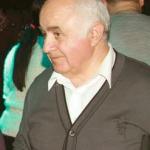We are all from Childhood by Origin
Primary tabs
Author:
At the beginning of each school year parents face a problem: what further educational trainings to choose for their children? What should the priority be and how to act so that it may correspond to the child’s preference and be useful from the educational point of view? This is not at all an easy task as it may seem to be at first sight. I can say from my own experience that still in remote Soviet times I attended the Radio Circle at our local “Pioneer Palace” and in the result of this I acquired a profession which later helped me in the military service.
There are two types of further educational trainings: according to preferences and according to the public educational subjects done at school. Further educational trainings based on preferences can be athletic, aesthetic, pre-professional and so on. It is very important that the child should make a choice to his own wish and not by the parent's or teacher's command. If further education is organized for primary school learners, the teacher should take into consideration the age peculiarities of this age group and organize the work so that the children can see the results of their work as soon as possible as they don’t have a big patience and can be frustrated while waiting for the final result. Encouragement and praise is also very important for juniors. It is very important for them to do their work with pleasure and not by compulsion so as not to get tired and bored. Trainings of further education shouldn’t be done at the expense of children’s games and leisure time.
Trainings of further education according to public educational subjects are aimed at increasing the learner's interest in acquiring specialized knowledge and skills in the particular school subject. As it was with the previous case the learner's independent choice (without the teacher's or parent's interference) is of utmost importance.
There are some parents who follow the principle “The more, the better”, and they send their children to several trainings of further education. It can be considered normal if the child manages all of them without any complaints or whines. Sometimes children change their groups of further education. It is also normal. We shouldn't interfere with their decisions as they are searching for what is close to them and corresponds to their preferences and characteristic features.
From my own experience in organizing further education
I have organized trainings of further education in History for the learners of Grades 7-8. The learners studied the following subjects related to History: Numismatics, Mythology, Vexillology, Signillography, Heraldry, Toponymy and so on. The syllabuses of these subjects can be read in my blog.
Numismatics not only gave additional knowledge in History but it was also a sort of integration with economics. Nowadays almost every family deals with banking system. They take loans, hypothicate their property, deposit, exchange currency and so on. The learners, who unintentionally get informed about bank functions, are very interested in the history of money and the process of its development. They asked thousands of questions about the history of money. In this way they became better at studying the social-economical affairs, monetary and loan relations of a country. In addition to that the monetary history gave good information about everyday life, political and economic situation of ancient world. Out of curiosity some of the learners began collecting old coins and banknotes of different countries.
Vexillology, Sigillolography and Heraldry give additional knowledge in state symbols. The learners discover what the ram, bull, lion, eagle, spade, sword, wheat spike mean on the state flags, emblems, blazons and seals. For example, why was there an image of a ram on Vardan Mamikonyan's blazon and an image of an eagle on the Zakaryans' blazon? Besides all these they also begin comprehending the European, Chinese, Japanese symbols which they come across in fiction books, films and other fields of culture.
Toponymy interests the children very much as it reveals the origin and history of Armenian mountains, rivers, lakes, villages and towns. It is very important because of the fact that Turkish-Azerbaijani historiography, besides salvaging and destroying Armenian cultural values, has begun a campaign against Armenian location names. Tigranakert has been renamed Diarbekir, Ararat – Aghri Dar, Euphrates – Murad, Stepanakert – Khankendi. The right knowledge of Armenian location names will help the learners to find the right way in the labyrinth of modern press, literature and cartography. This kind of further education not only gives additional knowledge in History but also it is a bright example of integration of two school subjects, History and country studies. The allocated hours in the curriculum for the history course are not enough to cover all this knowledge. The organization of further education gives an opportunity to fill in this gap. This problem doesn’t only concern History but other school subjects as well.

